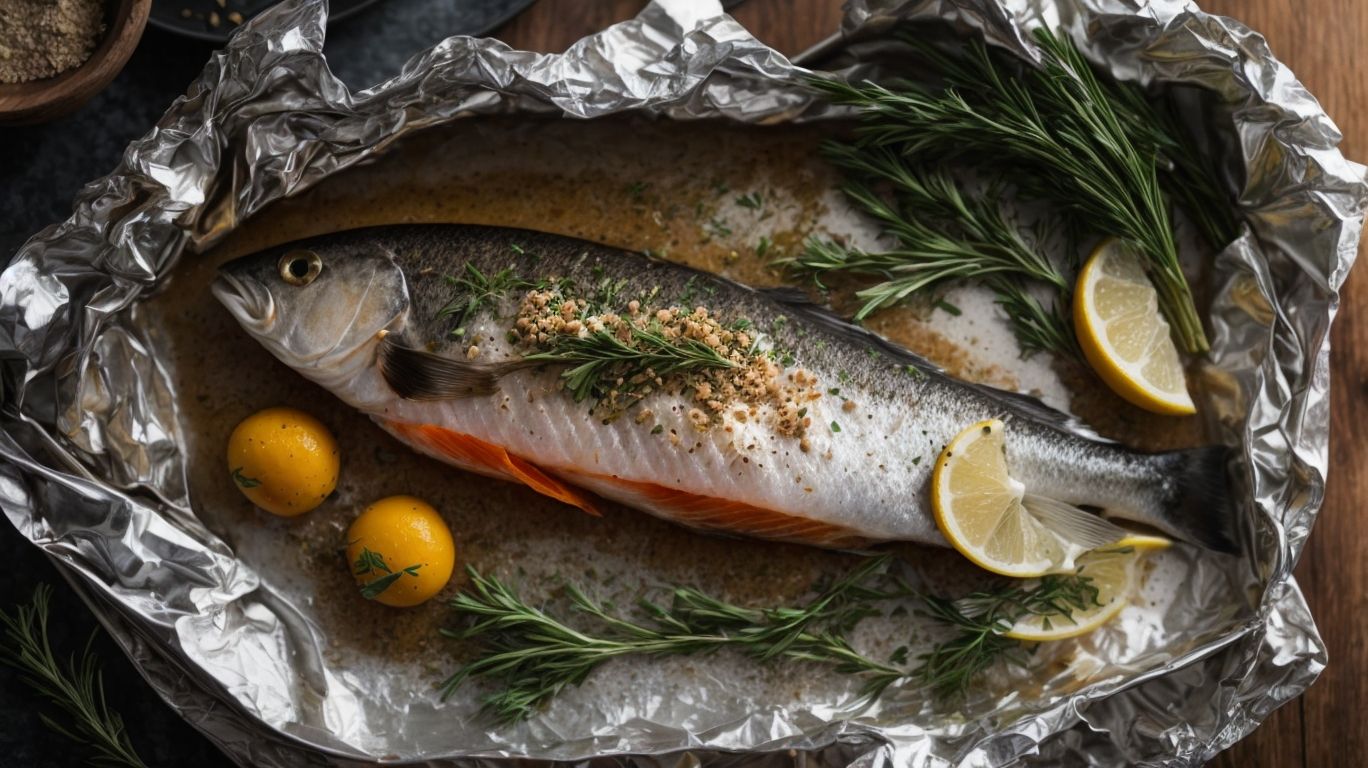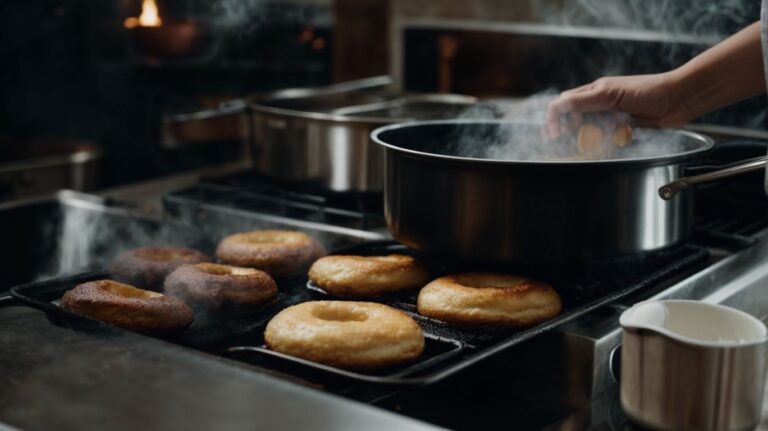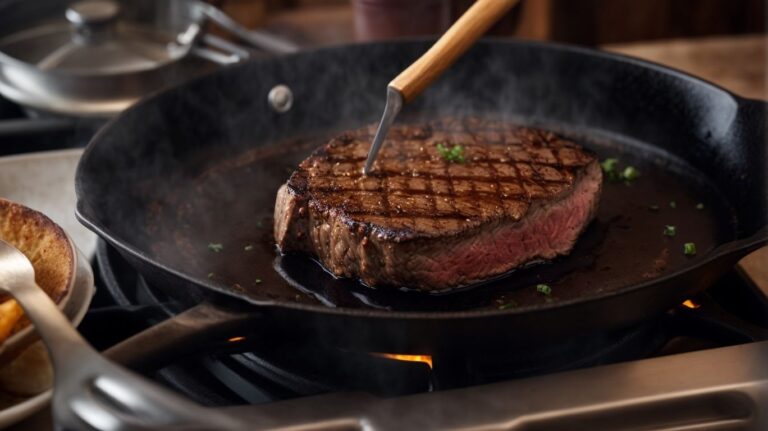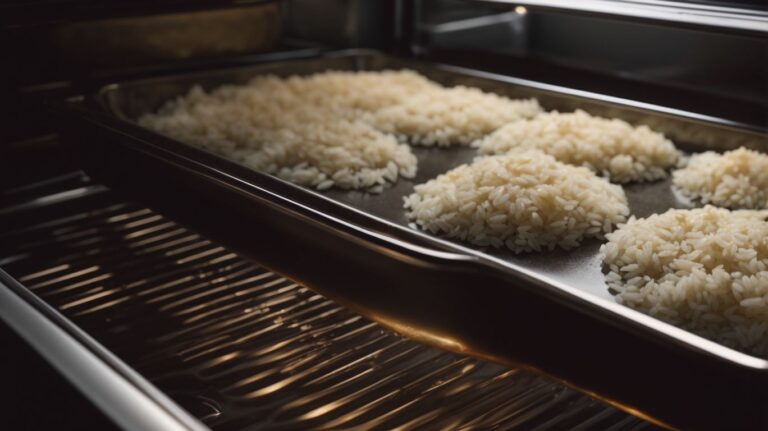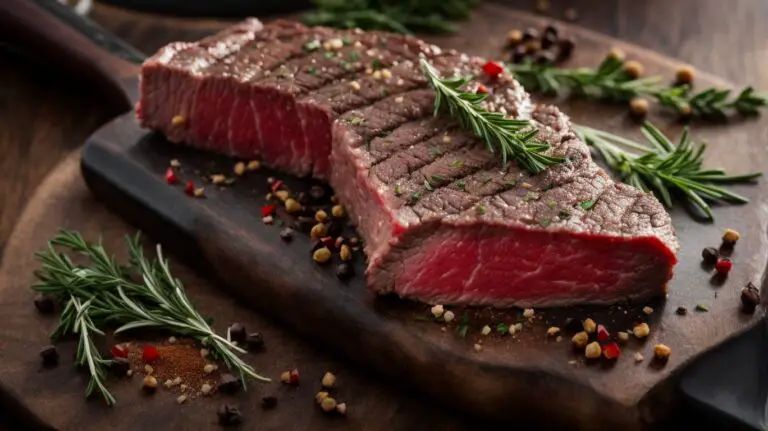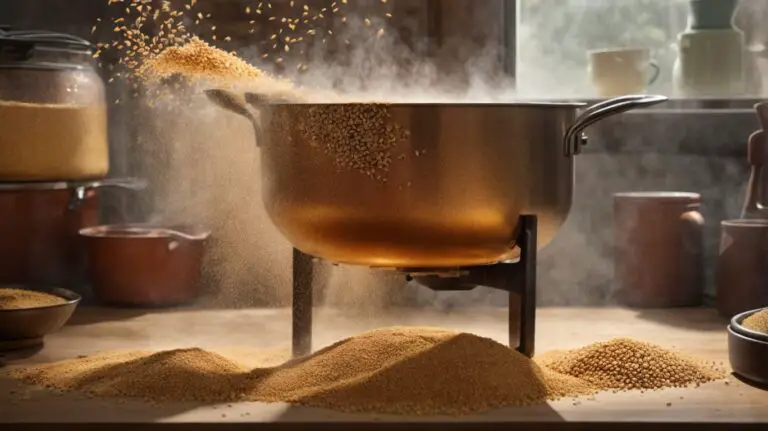How to Cook Fish in Oven With Foil?
Looking for a simple and effective way to cook fish in the oven? Using foil is a game-changer!
Discover the benefits of using foil to cook fish, including retaining moisture, preventing sticking, and easy clean-up.
Learn about the types of fish that can be cooked in the oven with foil, how to prepare the fish for cooking, and get step-by-step instructions and tips for perfectly cooked fish every time. Let’s get cooking!
Key Takeaways:
Why Use Foil to Cook Fish in Oven?
Using foil to cook fish in the oven offers several benefits, including retaining moisture, preventing the fish from sticking to the pan, easy clean-up, and a versatile cooking method.
When you wrap the fish in foil before placing it in the oven, the foil acts as a barrier that locks in the moisture, ensuring that your fish stays juicy and flavorful throughout the cooking process. This method also helps to prevent the delicate fish fillets from sticking to the pan, making it easier to remove them without any tearing or breaking.
The beauty of cooking fish in foil is that it simplifies the clean-up process significantly. Once you’re done cooking, you can simply discard the foil, leaving you with minimal dishes to wash and a tidy kitchen.
Cooking fish in foil opens up a world of possibilities when it comes to different cooking techniques. You can add herbs, spices, citrus slices, and other ingredients to the foil packets to infuse the fish with unique flavors. You can also experiment with various methods such as steaming, baking, or grilling the fish in foil, allowing you to customize your dish according to your preferences.
Retains Moisture
Cooking fish in the oven with foil helps retain the natural moisture of the fish, resulting in a succulent and tender texture.
When fish is wrapped securely in foil before baking, this cooking method creates a steamy environment, ensuring that the fish cooks in its own juices. The moisture trapped inside the foil keeps the fish from drying out, resulting in a beautifully moist and flaky texture. The enclosed space allows the flavors to intensify as they circulate around the fish, enhancing its taste profile.
- The use of foil helps in retaining essential nutrients that may otherwise be lost during the cooking process, making the dish not just delicious but also nutritious.
- The fish is shielded from direct heat, preventing overcooking and preserving its delicate nature. The end result is a perfectly cooked fish that is flavorful, moist, and tender, appealing to the palate and pleasing to the senses.
Prevents Fish from Sticking to the Pan
Foil acts as a barrier between the fish and the pan, preventing the fish from sticking and ensuring easy removal after cooking.
By using foil, you protect the delicate flesh of the fish from harsh direct contact with the hot surface of the pan, which can lead to sticking and tearing. This step not only simplifies the cleaning process but also helps in preserving the fish’s texture and flavors intact. The foil aids in distributing heat evenly, fostering a more uniform cooking experience. The convenience of effortlessly lifting the fish off the foil post-cooking prevents any accidental breakage, preserving the presentation of your dish.
Easy Clean-up
After cooking, the foil can be easily disposed of, making clean-up a breeze with minimal mess to handle.
Using foil to cook fish in the oven not only simplifies the cleaning process but also ensures a hassle-free kitchen experience. The beauty of this method lies in the fact that once your delicious fish is ready, you can simply toss the foil in the trash, sparing yourself from the arduous task of scrubbing baking pans or trays.
With foil, there are no stubborn food residues to deal with, no greasy surfaces to clean, and no need for soaking and scrubbing. This not only saves you time and effort but also keeps your kitchen looking spotless with minimal post-cooking cleanup.
Versatile Cooking Method
Using foil for cooking fish in the oven offers a versatile method that allows for different seasoning, ingredient combinations, and cooking styles.
The beauty of using foil as a cooking medium for fish lies in its ability to lock in moisture and flavors, while also allowing for easy clean-up post cooking. The foil acts as a protective barrier that helps prevent the fish from drying out in the oven, resulting in tender and juicy fillets. The flexibility of foil enables you to experiment with various herbs, spices, citrus fruits, and even vegetables to enrich the flavors and aromas of the dish.
What Types of Fish Can Be Cooked in Oven With Foil?
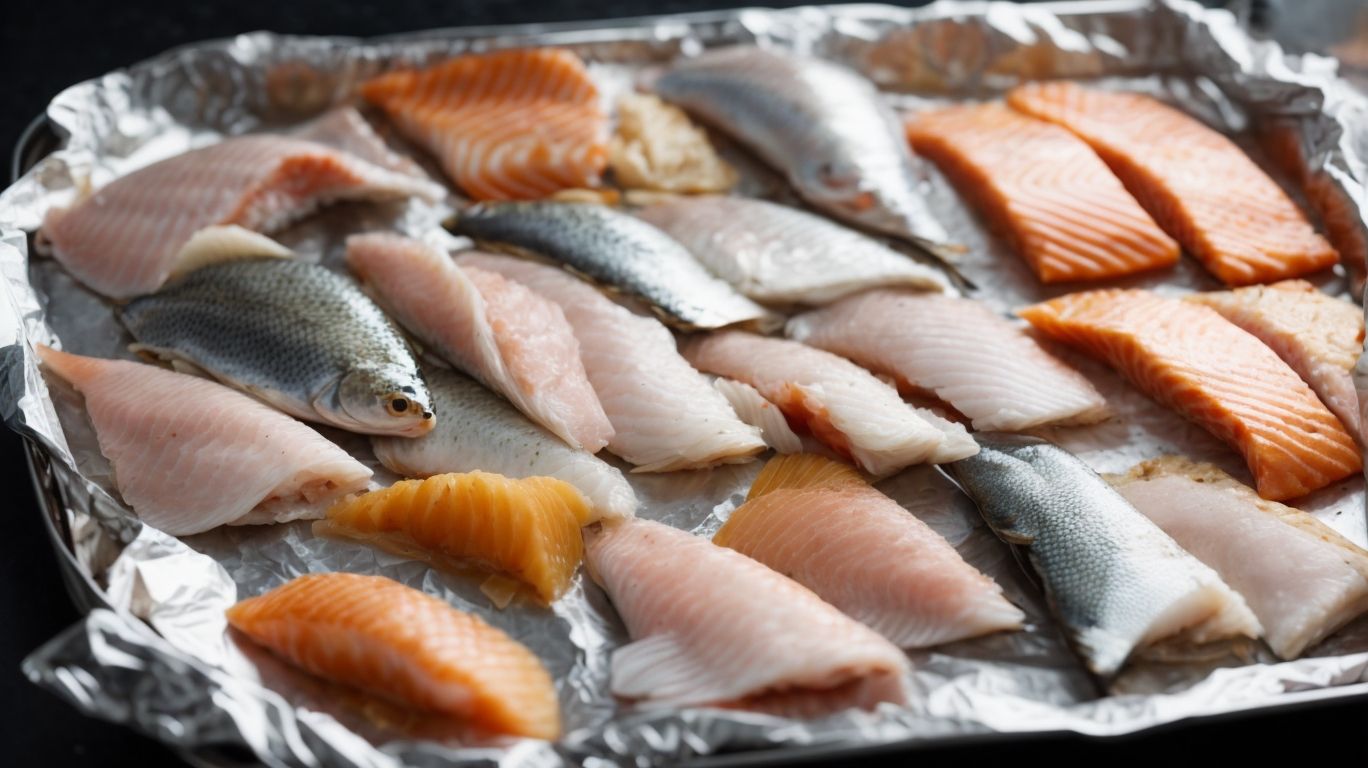
Credits: Poormet.Com – Albert Mitchell
Various types of fish can be cooked in the oven with foil, such as salmon, tilapia, cod, and halibut, offering a range of flavors and textures to suit different preferences.
Salmon, known for its rich, buttery taste, is a popular choice for baking in the oven as it stays moist and flavorful when cooked in foil. Tilapia, with its mild flavor and flaky texture, absorbs seasonings well, making it versatile for various recipes. Cod, a firm white fish, holds up excellently in foil packets, blending well with herbs and citrus flavors. Halibut, a lean fish with a meaty texture, cooks beautifully in foil, maintaining its delicate taste and moisture.
Salmon
Salmon is a popular choice for oven-baked foil packets, known for its rich flavor and moist texture when cooked with complementary ingredients.
The appeal of using salmon in foil packets lies not only in its delicious taste but also in its versatility. Salmon’s rich, buttery flavor pairs well with a variety of seasonings and ingredients, making it perfect for creating flavorful meals with minimal effort.
Salmon’s flaky texture and high oil content make it ideal for cooking in a foil packet as it helps lock in moisture and infuse the fish with the flavors of herbs, spices, and aromatic ingredients.
To enhance the natural taste of salmon, consider pairing it with fresh herbs like dill, lemon slices, garlic, butter, or even a splash of white wine before sealing it in the foil packet to bake to perfection in the oven.
Tilapia
Tilapia is a versatile fish that adapts well to oven cooking in foil, offering a mild taste that can be enhanced with various seasonings and accompaniments.
Due to its mild flavor profile, tilapia serves as a blank canvas for different seasoning combinations, ranging from zesty citrus blends to savory herb-infused mixtures, making it suitable for a wide range of culinary creations. Whether you prefer a simple lemon and herb seasoning or a more complex blend of spices, tilapia readily absorbs flavors to create a delicious dish.
The nature of cooking tilapia in foil helps to lock in moisture, ensuring a tender and juicy final result. This method of preparation is not only convenient but also allows for easy cleanup, making it ideal for busy weeknight dinners or hassle-free entertaining.
Cod
Cod is a popular choice for foil cooking in the oven, known for its firm texture and ability to absorb flavors well from accompanying ingredients.
When cooked in foil, cod retains its moisture, resulting in a tender and succulent dish that is difficult to overcook. The foil helps seal in the natural juices, enhancing the overall flavor profile and ensuring a delicious outcome.
The versatility of cod makes it an excellent canvas for experimenting with different seasonings and herbs. Whether you prefer a zesty lemon and herb blend or a spicy Cajun rub, cod adapts well to various flavor profiles, making it a versatile choice for those looking to add a burst of taste to their meals.
Halibut
Halibut is a premium fish option for oven-baked foil preparations, prized for its delicate flavor and succulent texture that is retained through foil cooking.
In terms of cooking halibut, using foil in the oven proves to be a game-changer. The gentle heat circulation inside the foil packet helps to seal in all the natural juices and flavors of the fish, resulting in a moist and tender outcome. Not only does the foil method ensure that the halibut remains moist and succulent, but it also helps to infuse the fish with any herbs, seasonings, or marinades used in the cooking process. This technique creates a harmonious blend of flavors that enhance the inherent taste of the halibut.
How to Prepare the Fish for Cooking?
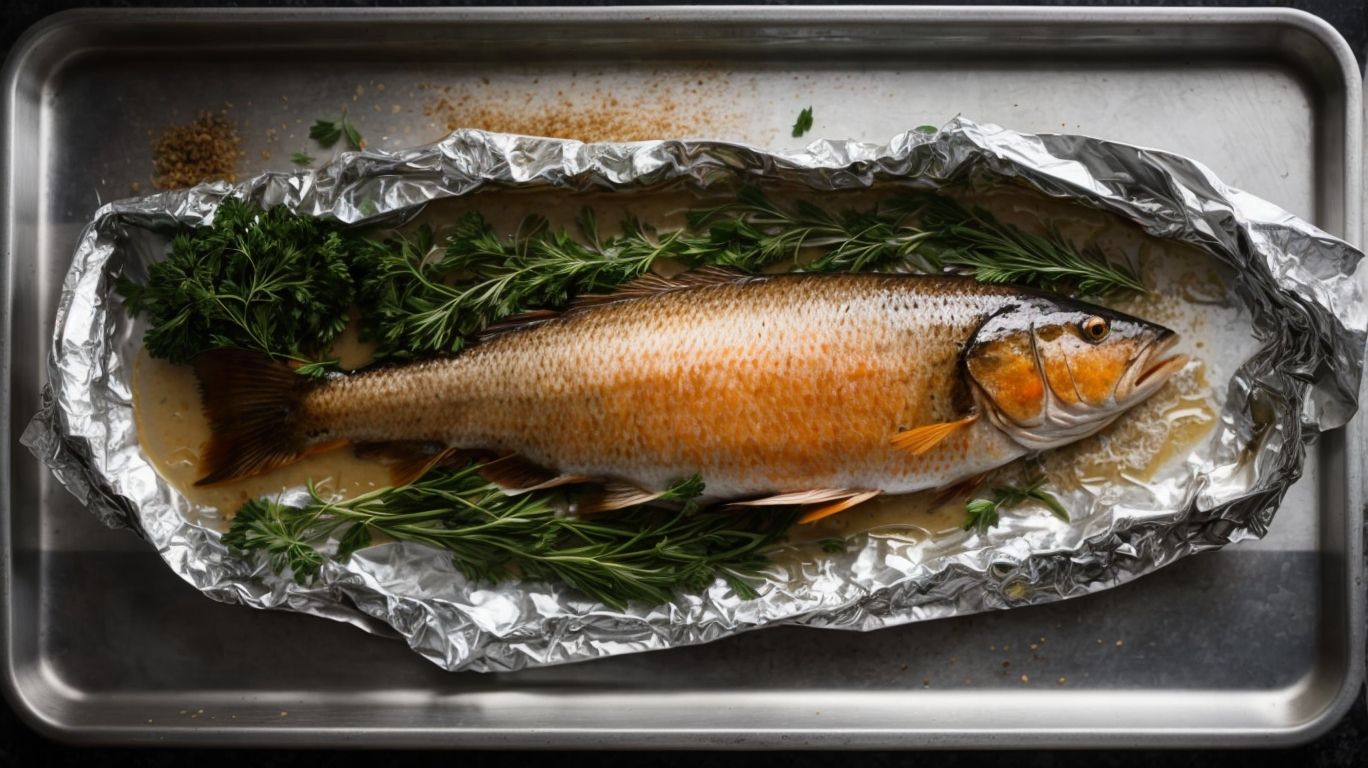
Credits: Poormet.Com – Randy Lewis
Preparing fish for cooking involves seasoning and marinating the fillets to enhance flavor and tenderness, along with adding complementary vegetables and ingredients for a well-rounded dish.
Once you have selected fresh fish fillets, start by rinsing them under cold water and patting them dry with paper towels to remove excess moisture. Next, lay a sheet of aluminum foil on a baking tray to create a convenient cooking pouch for the fish. Season the fillets generously with salt, pepper, and your favorite herbs or spices, ensuring that the flavors penetrate the flesh.
For an extra burst of flavor, consider marinating the fish in a mixture of olive oil, lemon juice, garlic, and herbs for at least 30 minutes before cooking. This step not only infuses the fish with delicious aromas but also helps to keep it moist during the baking process.
Seasoning and Marinating
Seasoning and marinating the fish fillets with ingredients like olive oil, garlic salt, black pepper, and lemon can elevate the flavors and textures of the dish.
When preparing fish fillets, a good rule of thumb is to coat them evenly with olive oil to enhance moisture retention during the cooking process. The addition of garlic salt brings a savory depth of flavor, complemented by the warming notes of black pepper. Lemon, with its bright acidity, not only adds a refreshing zing but also helps tenderize the fish, making it more succulent. These ingredients work together harmoniously to create a delicious base that infuses the fish with a medley of tantalizing tastes.
Adding Vegetables and Other Ingredients
Enhancing the dish by adding vegetables like asparagus, zucchini, red onions, and cherry tomatoes, along with garlic, olive oil, and oregano, creates a well-balanced meal with vibrant flavors.
When selecting vegetables for your foil packets, opt for vibrant, fresh produce that will complement the fish. Asparagus adds a delicious crunch, while zucchini brings a mellow texture. Red onions infuse a sweet and savory note, and cherry tomatoes burst with juicy goodness. Consider sprinkling some herbs like thyme or parsley for an extra flavor punch. Remember to drizzle a generous amount of olive oil to keep everything moist and flavorful inside the packet.
Prepare the vegetables by slicing them uniformly to ensure even cooking. Combining these fresh ingredients will elevate the overall taste profile of your dish.
Steps to Cook Fish in Oven With Foil
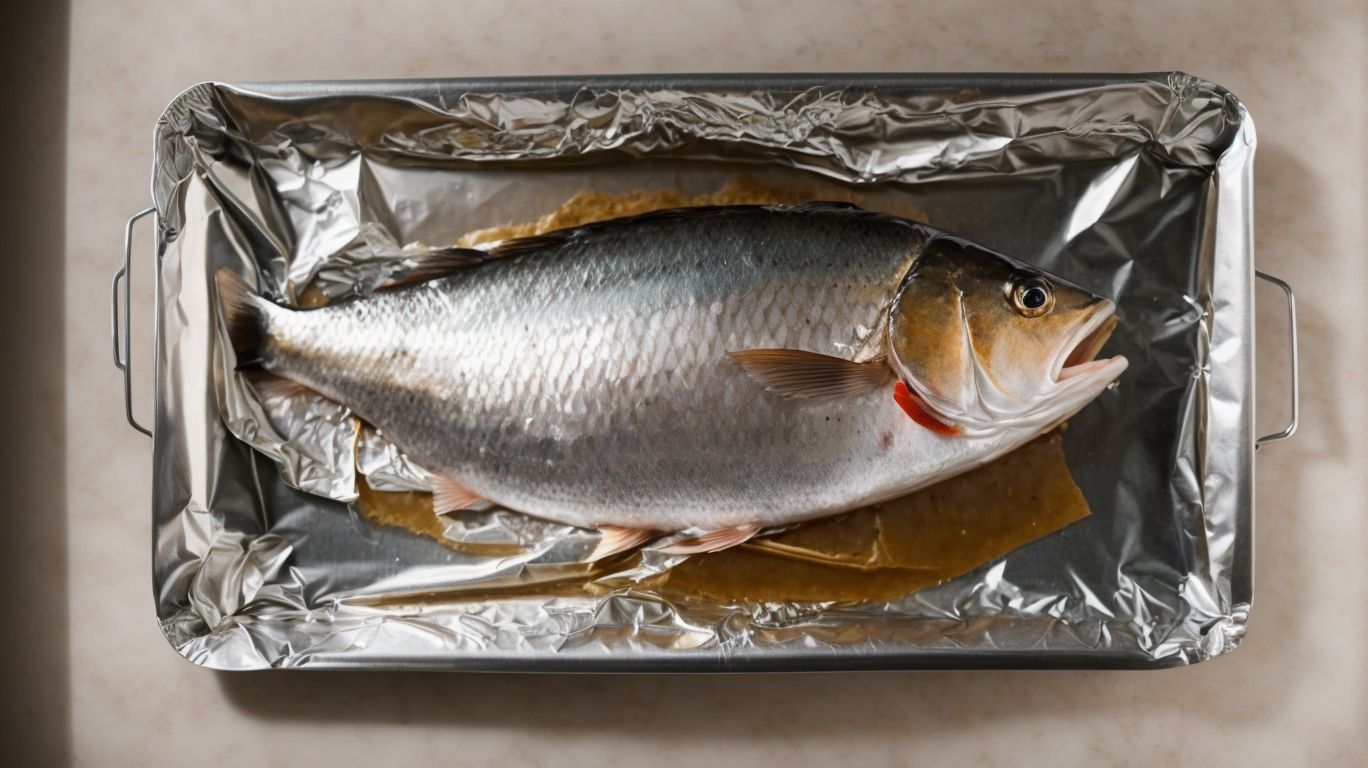
Credits: Poormet.Com – Ralph Young
Cooking fish in the oven with foil involves preheating the oven, preparing foil packets with seasoned fish and vegetables, placing them in the oven, and checking for doneness to ensure perfectly cooked fish.
First, ensure your oven is preheated to the recommended temperature for cooking fish.
- Next, season your fish fillets with herbs, lemon, and spices, and place them on a large piece of foil.
- Add some sliced vegetables like bell peppers and onions for added flavor and nutrients.
- Wrap the foil tightly around the fish and veggies to create a sealed packet, ensuring no gaps for steam to escape.
- Place the packets on a baking sheet and transfer them to the preheated oven.
- Bake the fish for the specified time, usually 15-20 minutes depending on the thickness of the fillets.
To check for doneness, gently open a packet and test the fish with a fork. It should flake easily and be opaque all the way through. Once the fish is cooked, serve it hot with a squeeze of lemon and garnish with fresh herbs for a delicious and healthy meal.
Preheat the Oven
The first step in cooking fish in the oven with foil is to preheat the oven to the recommended temperature, ensuring even cooking and optimal flavor development.
Preheating the oven is a crucial initial stage when it comes to preparing fish in foil. By preheating the oven, you are setting the stage for a successful cooking process. It allows the fish to start cooking immediately at the right temperature, leading to a more uniform result. When the oven is at the correct temperature, the fish cooks evenly, ensuring that all parts are done at the same time. This consistency in cooking helps avoid overcooking or undercooking certain areas of the fish.
Prepare the Foil Packets
Creating foil packets with seasoned fish fillets, vegetables, and aromatics like garlic and herbs ensures that the flavors meld together during the cooking process, resulting in a delicious dish.
When assembling these packets, it’s important to layer the ingredients thoughtfully to allow for even cooking. Start by placing a piece of aluminum foil on a flat surface and stacking your ingredients in the center. This method not only infuses all components with marvelous flavors but also retains the juices, ensuring a moist and tender outcome.
Place the Packets in the Oven
Carefully placing the foil packets in the preheated oven allows for gentle cooking of the fish and vegetables, locking in moisture and flavors for a delectable meal.
Once these packets are carefully arranged on the oven rack, the gentle heat surrounds the ingredients, maintaining their natural juices and nutrients. This ensures that each bite bursts with succulent tenderness and intense flavors. The enclosed environment created by the foil allows for steam to circulate, promoting even cooking and enhancing the overall taste profile.
The magic of this method lies in how it marries ingredients to produce a synergy of flavors that is nearly impossible to achieve through conventional cooking methods. Whether you’re preparing a quick weekday dinner or showcasing your culinary skills, the foil packet technique elevates your dishes to a whole new level.
Check for Doneness
To ensure perfectly cooked fish, it is essential to check for doneness by verifying that the fish flakes easily with a fork and reaches the desired internal temperature.
When cooking fish in the oven with foil, checking for doneness becomes a crucial step in guaranteeing a delicious outcome. The visual cue of flakiness is a reliable indicator that the fish has cooked through. This flakiness is seen when the fish easily breaks into individual, opaque segments under the gentle pressure of a fork.
Solely relying on visual cues might not be enough. It is recommended to use a food thermometer to ensure that the fish has reached the appropriate internal temperature. By reaching the desired internal temperature, you can be certain that the fish is both safe to eat and at its peak flavor. This attention to detail will elevate your oven-baked fish dishes to the next level.
Tips for Perfectly Cooked Fish Every Time
Achieving perfectly cooked fish every time requires using high-quality fish, avoiding overcooking, experimenting with different flavors, and utilizing a meat thermometer for precision.
In terms of fish quality, freshness is key. Opt for fish that has a bright, clear color, firm flesh, and a clean smell, avoiding any fishy or ammonia-like odors. Freshness not only impacts taste but also affects the texture and overall cooking outcome of the fish.
Cooking fish to perfection is all about precision. Different fish varieties have varying cooking times; therefore, knowing the specific cooking time for the type of fish you are preparing is essential. Overcooking can lead to dry, rubbery fish, while undercooking poses health risks.
Exploring different flavor combinations can elevate your fish dishes. From zesty citrus marinades to herb-infused oils, there are endless possibilities to enhance the natural flavors of the fish. Don’t be afraid to experiment and discover new taste profiles.
A meat thermometer is a crucial tool in ensuring that your fish is cooked to the right temperature. Insert the thermometer into the thickest part of the fish; for most fish, the internal temperature should reach 145°F (63°C) to guarantee safe consumption.
Use High-Quality Fish
Selecting high-quality fish ensures better flavor, texture, and overall cooking results, elevating the dining experience and culinary satisfaction.
When choosing top-notch fish, you are essentially setting the foundation for a delicious dish that will leave your taste buds dancing with delight. High-quality fish, with its freshness and superior taste, imparts a richness and depth to your recipes that simply can’t be replicated with lower-grade alternatives. The texture of premium fish is often firmer and more succulent, ensuring that your final dish is not only flavorful but also pleasantly satisfying to the palate. Incorporating high-quality fish into your culinary creations elevates them from good to gourmet, offering an unparalleled gastronomic experience.
Don’t Overcook the Fish
Avoiding overcooking is crucial for maintaining the delicate texture and flavors of the fish, ensuring a delightful dining experience with perfectly cooked fish every time.
When fish is overcooked, it can result in a dry and tough texture, significantly diminishing the dish’s quality.
Properly cooked fish should be moist, tender, and flaky, showcasing its natural flavors. Overcooking can lead to a bland taste devoid of the subtle nuances that make seafood dishes so appealing. It’s important to follow recommended cooking times diligently and monitor the fish closely to achieve optimal results.
Experiment with Different Flavors
Exploring diverse flavor combinations and seasonings can enhance the culinary experience, allowing for creative expression and personalized touches in fish preparation.
When working with fish, you have an array of options to play with; from zesty citrus marinades to aromatic herb rubs, each flavor profile adds a unique touch to your dish.
For a subtle kick, consider using a blend of garlic, lemon, and parsley, or go bold with a spicy cajun seasoning. Mixing and matching spices like cumin, coriander, and paprika can take your fish to a whole new level of deliciousness.
Don’t be afraid to experiment until you find your perfect seasoning combination!
Use a Meat Thermometer
Utilizing a meat thermometer ensures precise cooking temperatures for fish, guaranteeing food safety and optimal doneness without the risk of undercooking or overcooking.
With the accuracy provided by a meat thermometer, chefs can elevate their culinary skills to achieve perfect results every time. This handy tool takes the guesswork out of cooking delicate fish varieties by indicating the exact temperature, allowing for precise control over the cooking process. Not only does this help in avoiding the common pitfall of dry or raw fish, but it also minimizes the chances of foodborne illnesses associated with improperly cooked seafood. By investing in a quality meat thermometer, home cooks and professional chefs alike can elevate their cooking experience and create delectable fish dishes with confidence.
Frequently Asked Questions
How to Cook Fish in Oven With Foil?
Cooking fish in the oven with foil is a simple and delicious way to enjoy fresh seafood. Here are some frequently asked questions and answers to help you master this cooking method.
1. What type of fish is best for cooking in the oven with foil?
Any type of fish can be cooked in the oven with foil, but thicker, meatier fish like salmon, cod, and halibut are ideal. These types of fish hold up well to the heat and retain their moisture when cooked in foil.
2. Do I need to preheat the oven before cooking fish in foil?
Yes, it is important to preheat your oven before cooking fish in foil to ensure even cooking. Preheat your oven to the desired temperature before placing the foil-wrapped fish inside.
3. How do I prepare the foil for cooking fish in the oven?
Tear off a piece of heavy-duty aluminum foil, enough to wrap around the fish completely. Place the fish in the center of the foil and season with your desired herbs and spices. Fold the foil edges over the fish, sealing tightly to create a packet.
4. Can I add vegetables to the foil packet with the fish?
Absolutely! Adding vegetables like sliced peppers, onions, and zucchini is a great way to create a complete meal in one foil packet. Just make sure to cut the vegetables into uniform sizes to ensure even cooking.
5. How long should I cook fish in the oven with foil?
The cooking time will vary depending on the type and thickness of the fish. A good rule of thumb is to cook fish in a 375°F oven for about 10 minutes per inch of thickness. Make sure to check the internal temperature of the fish to ensure it has reached a safe temperature of 145°F.
6. How do I prevent the fish from sticking to the foil?
To prevent the fish from sticking to the foil, you can lightly grease the foil with cooking spray or a small amount of oil before placing the fish inside. You can also place a layer of parchment paper between the fish and foil for added protection.

